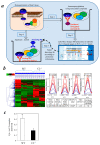Complement C3 Reduces Apoptosis via Interaction with the Intrinsic Apoptotic Pathway
- PMID: 37759504
- PMCID: PMC10528058
- DOI: 10.3390/cells12182282
Complement C3 Reduces Apoptosis via Interaction with the Intrinsic Apoptotic Pathway
Abstract
Myocardial ischemia/reperfusion (I/R) elicits an acute inflammatory response involving complement factors. Recently, we reported that myocardial necrosis was decreased in complement C3-/- mice after heart I/R. The current study used the same heart model to test the effect of C3 on myocardial apoptosis and investigated if C3 regulation of apoptosis occurred in human cardiomyocytes. Comparative proteomics analyses found that cytochrome c was present in the myocardial C3 complex of WT mice following I/R. Incubation of exogenous human C3 reduced apoptosis in a cell culture system of human cardiomyocytes that did not inherently express C3. In addition, human C3 inhibited the intrinsic apoptosis pathway in a cell-free apoptosis system. Finally, human pro-C3 was found to bind with an apoptotic factor, pro-caspase 3, in a cell-free system. Thus, we present firsthand evidence showing that C3 readily reduces myocardial apoptosis via interaction with the intrinsic apoptotic pathway.
Keywords: apoptosis; complement C3; cytochrome c; ischemia/reperfusion injury (IRI); pro-caspase 3.
Conflict of interest statement
The authors declare no conflict of interest.
Figures




Similar articles
-
Myocardial Ablation of G Protein-Coupled Receptor Kinase 2 (GRK2) Decreases Ischemia/Reperfusion Injury through an Anti-Intrinsic Apoptotic Pathway.PLoS One. 2013 Jun 21;8(6):e66234. doi: 10.1371/journal.pone.0066234. Print 2013. PLoS One. 2013. PMID: 23805205 Free PMC article.
-
Cardiac Sirt1 mediates the cardioprotective effect of caloric restriction by suppressing local complement system activation after ischemia-reperfusion.Am J Physiol Heart Circ Physiol. 2016 Apr 15;310(8):H1003-14. doi: 10.1152/ajpheart.00676.2015. Epub 2016 Feb 12. Am J Physiol Heart Circ Physiol. 2016. PMID: 26873964
-
Fluvastatin attenuated ischemia/reperfusion-induced autophagy and apoptosis in cardiomyocytes through down-regulation HMGB1/TLR4 signaling pathway.Mol Biol Rep. 2021 May;48(5):3893-3901. doi: 10.1007/s11033-021-06326-9. Epub 2021 May 25. Mol Biol Rep. 2021. PMID: 34032975
-
The interplay between pro-death and pro-survival signaling pathways in myocardial ischemia/reperfusion injury: apoptosis meets autophagy.Cardiovasc Drugs Ther. 2006 Dec;20(6):445-62. doi: 10.1007/s10557-006-0583-7. Cardiovasc Drugs Ther. 2006. PMID: 17149555 Review.
-
Activated STAT-1 pathway in the myocardium as a novel therapeutic target in ischaemia/reperfusion injury.Eur Cytokine Netw. 2002 Oct-Dec;13(4):401-3. Eur Cytokine Netw. 2002. PMID: 12517719 Review.
Cited by
-
Double-Edged Sword: Exploring the Mitochondria-Complement Bidirectional Connection in Cellular Response and Disease.Biology (Basel). 2024 Jun 11;13(6):431. doi: 10.3390/biology13060431. Biology (Basel). 2024. PMID: 38927311 Free PMC article. Review.
-
The secret life of complement: challenges and opportunities in exploring functions of the complosome in disease.J Clin Invest. 2025 Jun 16;135(12):e188350. doi: 10.1172/JCI188350. eCollection 2025 Jun 16. J Clin Invest. 2025. PMID: 40519170 Free PMC article. Review.
References
Publication types
MeSH terms
Substances
Grants and funding
LinkOut - more resources
Full Text Sources
Research Materials
Miscellaneous

